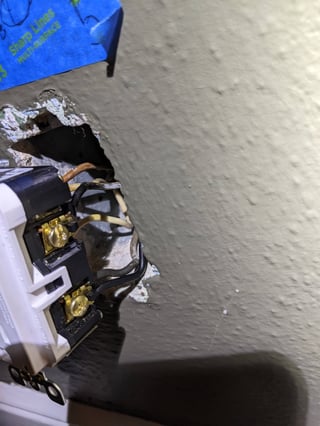Recently moved into the house. About half of it has ungrounded outlets. Trying to replace them with GFCIs for some increased safety.
This outlet in the living room is giving me trouble. On Friday I hooked it up as shown in the picture. The black hot wire and the brown neutral wire connected to the line side and the other 4 wires on their respective load sides. All the outlets including this one in the living room worked after that for about an hour. They randomly shut off. I was able to reset this one which made the rest in the room turn back on. I woke up the next day and they were off again. This time though, resetting them did not work. So now none of the outlets in the room work. Any idea what happened here or what I can do about it?



